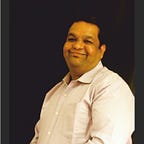Designing Conditions for Experiences by Alok Nandi
I have been hooked on to Podcasts for a few years, when my friend, the founder of WittyPen, Anshul Motwani, introduced me to the medium. As I started listening to the podcast shows, while driving to my office, I got blown away by this medium. In due course, getting inspired by so many individuals, including Varun Duggirala, Guy Raz, David Brown, and so many more, I decided to host a podcast for my workplace, Avantika University.
We thought of starting a show on the theme of Designeering, the world where domains of Design and Engineering collide. While there are so many practitioners of Designeering, the term almost doesn’t exist even on Google. Thus, we thought of introducing these veterans and their experiences in the form of interviews and stories. You can hear our podcast here or any major platform: Avantika Designeering Series.
Every week, on this forum, we will bring to you some of the thought-provoking ideas, opinions, and conversations that these speakers share on our show.
Interview Excerpt:
Rohit Lalwani: How did you get introduced to the world of user interface and user experience?
Alok Nandi: If I go back, it is in 94 when I got interested in web design.
At that time, we didn’t use the word UX though User experience architect was coined, two, three years before by Don Norman when he was at Apple. But the usual term was web design and at the end of the 90s we had user experience becoming a frequent word used by everyone. I would say that the challenge we have nowadays with that word user experience is that we have a narrow definition and it creates confusion.
Like for example, we have confusion between UX and UI, and that is something we need to dig into. One of the points I often make is that you cannot design experience. You can design conditions for the experience to happen because you cannot be in the head or the hand of a user. Still, you create a situation where the user or the consumer does something which fits into their objectives and comes into resonance with the purposes of the provider or the business. And so these are questions that students need to work on more critically, rather than just copy and paste some wireframe. Look at the landscape of websites and apps. They are so boring. Everything looks like the other.
That is a provocation I am bringing here to this podcast. If we go back into the history of web design and UX in the 90s, it was so full of energy because you could explore so many situations. What you see nowadays is that you take a framework, and then you copy and paste, you change some variables, and that’s it.
So that would be my provocation to the listeners of this podcast.
Rohit Lalwani: User experience has so many different ideologies which are out there, what’s your user experience philosophy?
Alok Nandi: Mine is ‘Be Agnostic’. We are working on processes and activities, which are there to make a product or service, a platform happen.
We need to be very flexible in trying to use the optimal set of tools and methods which fit a vision and get in resonance with some emotions and activities of our users and stakeholders, and that requires an elastic mind.
You need to be able to understand patterns and behaviors and try to say, what if? But I would also like to add the word, why should I?
Rohit Lalwani: Is the user experience old wine in a new bottle?
Alok Nandi: In a way, yes and no. Yes. Because if we look at some of the practices, we see a kind of series of cycles every four or five, six years. You have different phases and fads of UX, and there I would say yes, it is. Like I was mentioning earlier in the mid-90s, we were talking about web design. Then we began to talk about information architecture in the 90s — early 2000s which is completely ignored today.
Very few people go deep into the practice. A substantial part of the activity of UX is information architecture. And so that’s why I see, yes, it’s all wine, but at the same time we have a change of context and the change of context is brought by technological development and by behaviour. You get how everyday people are using products.
Take an example of a smartphone. Go back five years ago, in 2007–08 when the iPhone was launched and then again in 1998–99 when Nokia was launched. You have different sets of behaviours which are impacting our job as designers because we need to understand how these devices and the software are used, consumed. You have to design or redesign some elements so that it is both meaningful and convenient.
The challenge of design is to make sure that you get in phase with convenience, and that is why you need some old, but you also need to refresh.
This was a short teaser for our show. If you are an aspiring or young designer or techie, the show is a must-listen for you to take inspiration, understand the trends and hear stories from your domains. Tune into your favorite podcast application and hear more from Alok Nandi on his hobby of baking bread, life during covid times and his journey of multitasking.
Avantika Designeering Series is hosted by Avantika University, India’s first Design Centered University. To know more visit www.avantika.edu.in
Show: Avantika Designeering Series
Episode Nos: 1
Guest: Alok Nandi
Theme: Transforming experiences for future
Available on: Spotify, Castbox, Google Podcast. Apple Podcast, Hubopper and more
